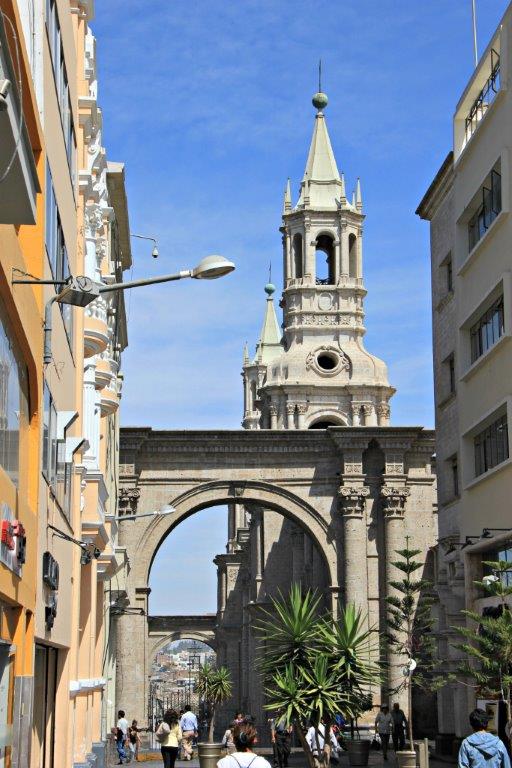
I am going to share all the best and most amazing Arequipa highlights from my trip to Peru!
Arequipa is the second largest city in Peru. With less than 1 million people it is a huge contrast to the bustling population of 9 million in Lima.
Known as the “White City”, Peru a relaxing, walkable city. The altitude of Arequipa is 7,638 feet (2,328 meters) so while lower than the Sacred Valley or Cusco it is still quite high.
There are a lot of things to do and explore, and the cuisine in Arequipa is a bit different to the rest of the food found in Peru. The historic city center is a UNESCO World Heritage site. The city was part of the Inca Empire, an important part of the Spanish settlement of Peru and served as the capital of Peru from 1835-1883.
Its location and history have made it an important part of the trade route for wool and Arequipa is a good place to find and buy Alpaca wool garments for souvenirs.
Exploring the San Camilo Market
We went to the San Camilo Market, the central market in Arequipa as part of our tour at cooking school. It was great to have a guide as there are a lot of unusual things in the market. Some highlights:
- Frogs are a specialty; you can find fresh frog legs as well as Peruvian frog juice at the San Camilo Market Arequipa!
- A huge variety of fruits and vegetables, many of which we had never heard of or seen. We had a tasting of some of the more unusual ones as part of the tour. The fruit and vegetable selection was impressive both for its quantity and its variety at this Arequipa market.
- All the different types of potatoes! Like Peruvian Scalloped Potatoes?
- Like many cultures, Peruvians are superstitious. Within the market, you can find a variety of trinkets and “offerings” designed to bring you and/or the recipient good luck including paper money, cars, food, and figurines, the most common figure is El Ekeko.
El Ekeko
These are extremely common to see throughout Peru and worthy of an explanation. The figurine is a man dressed in traditional clothing, usually, a poncho, loaded with various goods in bags and baskets holding food, household objects, currency, and other objects symbolizing a comfortable and prosperous life. A household places El Ekeko Arequipa somewhere prominent in their home to bring them good fortune
The Ekeko is a long tradition popular in Peru and other parts of Northern South America (Bolivia, Northern Chile and Argentina.) El Ekeko is the god of abundance and prosperity in the folklore of the people living in the Andean Altiplano (high plains). It is believed to date back to the Pre-Columbian times from the Tiwanakan culture.
As the goods the figurine can carry varies, people look for a figurine carrying the goods they would like to someday acquire. El Ekeko is a common gift especially as a housewarming or wedding present. Peruvians believe giving one as a gift brings both the recipient and the giver good fortune. So it is as good to give as to receive El Ekeko!
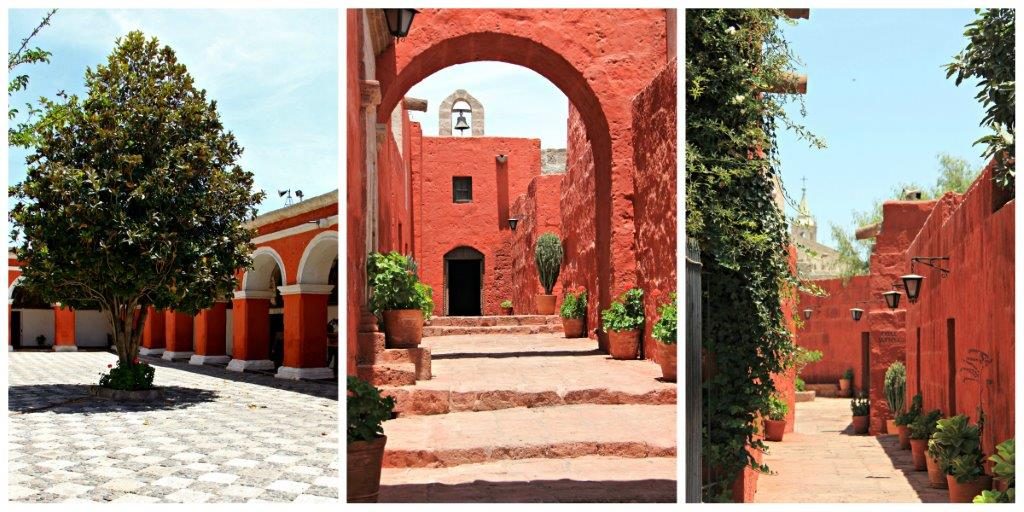
Santa Catalina Convent
Founded in 1579, the Santa Catalina Convent was a home for cloistered nuns. Many were from wealthy families and entered the convent never leaving it again.
The convent has an extensive art collection and you can walk through many of the quarters where the nuns lived. They are quite large, and some were furnished quite well. They include cooking facilities, multiple rooms, gardens and rooftop terraces.
The complex itself is very scenic and calming. Photo opportunities abound.
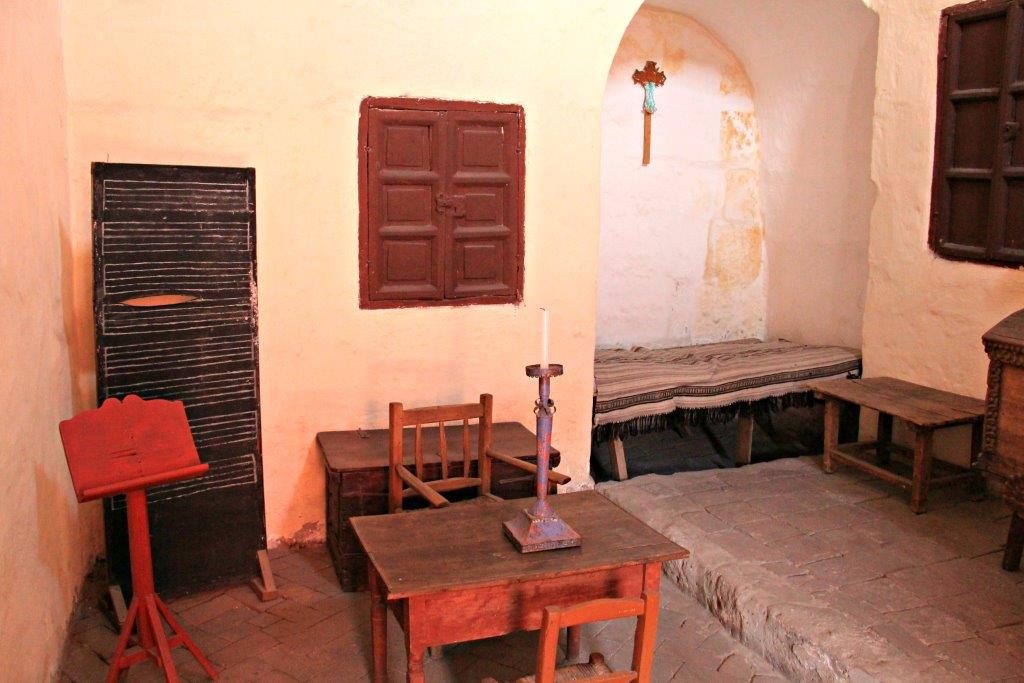
Sanctuaries Andean Museum
The Sanctuaries Andean Museum is part of the local Catholic University de Santa Maria in Arequipa. It houses artifacts found in the surrounding areas. It’s most famous artifact is “Juanita, the Ice Maiden” discovered high on the Ampato Volcano in 1995.
The young girl is believed to have been a ritual sacrifice by the Incas over 500 years ago. The body was found in snow and ice and the remains are very well preserved. Archaeologists hope to learn more about the Inca culture by studying Juanita’s remains.
Eat at a Picanteria
The cuisine of Arequipa is slightly different from the rest of Peru with many famous dishes including Rocoto Relleno (spicy red stuffed peppers and cuy (guinea pig) originating here).
The best place to try the local flavors is a picanteria, as restaurants featuring local dishes are called.
The name originates from the fact they originally began serving spicy food that could be eaten with chicha, the local drink made from corn. The purple drink is made from fermented corn and has a slightly bitter taste. The spicy food was served so you would drink more chicha!
Lu Nueva Palomino
We ate at La Nueva Palomino, a well known local picanteria recommended by the chef at our hotel and the cooking instructor at the Peruvian Cooking experience as the best picanteria in Arequipa.
Whilst you laze back and enjoy the Diario Correo (Otherwise known as The Daily Mail in Arequipa), and maybe aren’t certain what to order after your coffee, I have a list of some suggestions for you to take your pick from.
Some local dishes to try:
- Cuy originated in Arequipa
- Rocoto Arequipa Giant Relleno– spicy red stuffed red peppers
- Adobo- spicy, marinated pork dish. The marinade includes local spices and chicha.
- Chupe de Camarones (Shrimp Chowder) warning- these are whole shrimp, heads on.
- Queso Helado – evaporated milk, condensed milk, vanilla extract, served with cinnamon on top. (No cheese in it).
- And of course a drink of the local chicha.
You can also find reviews on Trip Advisor.
Arequipa Highlights
I loved my time exploring and indulging in the local cuisine, and thoroughly enjoyed all of the highlights brought to my Peru trip! Have you ever been there and tasted the food? Did you love it? Let me know by leaving a comment.
If you enjoyed this post you might also enjoy:
In the Footsteps of the Incas: The Inca Trail to Machu Picchu
How to Make a Pisco Sour & What You Need to Know about Pisco
The Best of Books, Cookbooks and Movies about Peru
Peruvian Ceviche How to Make This Classic at Home
Peru’s Most Popular Dish How to Make Lomo Saltado
Do You Know What Makes Lake Titicaca so Special?
The Best Peruvian Scalloped Potatoes Recipe Ever

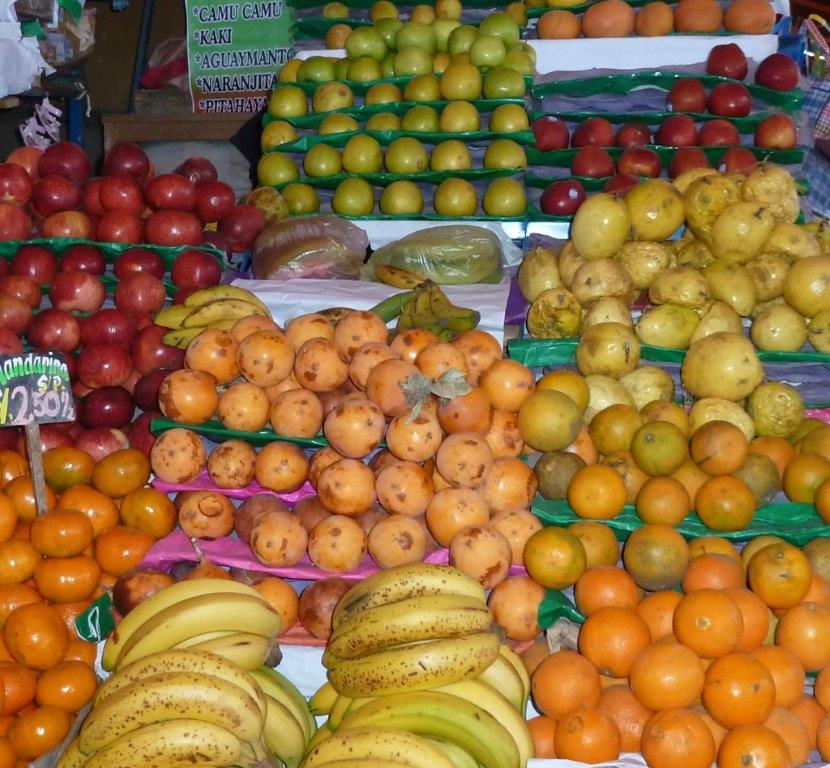
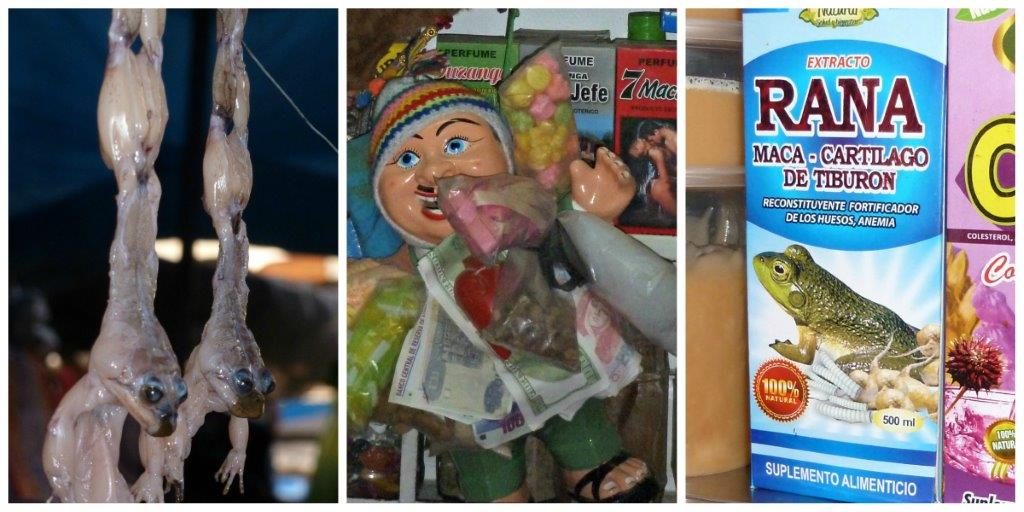

Karin
So did you get the alpaca sweater in Peru? I got one in Colombia (but it´s made in Peru obviously) and I love it! It´s great, warm and soft.
Editor
We bought sweaters and balls of alpaca wool (about a third of the price compared to back home). Thanks for your comment.
Heather
You lost me at frogs but got me back at potatoes.
Editor
Heather, Yeah it takes a minute to register those are frogs hanging there! But the potatoes are amazing! That whole market was fascinating!
Rob Taylor
Rocoto Relleno sounds wonderful, as I love anything relleno. I can’t wait to experience Peru and all of the amazingness it has to offer.
Editor
Rob, We really enjoyed it. It’s hard to describe, they call it enchanted and it is a bit. A lot of things are still very traditional, but the tourism infrastructure is good and well developed so it is easy to travel around.
Sabine
So what is the word for frog, so that I know what not to buy? 😉 Great information and the city really looks charming 🙂
Editor
Yes the frog and the frog juice was a shock. Spectacular with the mountains behind. Thanks for your comment.
Paul
Lovely post. Looks like a great city to explore. Those frogs look a little freaky!
Editor
Paul, They are a little freaky, it take a minute to realize what they are when they are hanging there! We didn’t include a recipe for them!
Alice Teacake
Frog juice? Yikes! Did you try it? I’m really intrigued ><
Editor
No we wimped out on the frog juice and didn’t try it! It was popular with the locals though. Thanks for your comment.
Anita Hendrieka
Wow looks like an interesting market! Great read 🙂
Editor
Yes they sold everything there. It was busy too. Thanks for your comment.
Violeta
I’ve never seen skinned frogs hanging like that! Your article is a good starting point for preparing a visit to Arequipa.
Editor
Yes it was a slightly confronting view! Ans there were many market stalls featuring them. Thanks for your comment.